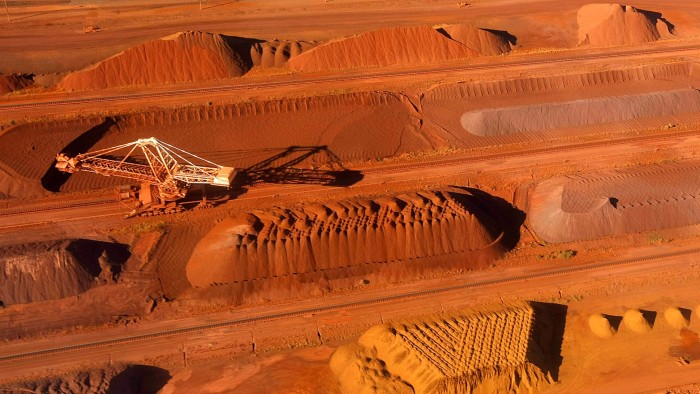The risks of Australia’s ‘house and holes’ economy are rising

Roula Khalaf, Editor of the FT, selects her favourite stories in this weekly newsletter.
The writer is a former banker and author of Fortune’s Fool: Australia’s Choices
Australia’s “houses and holes” economy is based around property and commodity exports. As the country heads to national elections due by May 21, it is increasingly boxed in by those narrow parameters.
For decades, successive mineral booms (iron ore, coal, gas) and growing Asian demand have underpinned economic activity. The most recent cycle (which started around the mid 2000s) increased investment to around 8 per cent of gross domestic product. Employment, wages and household disposable incomes rose around 3 per cent, 6 per cent and 13 per cent respectively.
The housing economy consists of residents buying and selling property from and to each other for ever-higher prices using borrowed money in a surreal pyramid of paper wealth creation, which hit A$9tn (more than 4 times GDP) in 2021.
This structure is narrow and risky creating low-quality, fictional prosperity.
The economy is exposed to volatile commodity price cycles. Australia’s mining wealth is based around non-renewable, finite resources. Fossil-fuel energy exports will be impacted by emission reduction measures; for example, the shift to renewables, proposed carbon taxes and the EU’s levy on carbon-intensive imports. Miners already face funding pressures due to ESG investment guidelines.
After the construction phase, mining creates little employment, directly accounting for only 2—3 per cent of total jobs. Capital-intensive projects import equipment and technology affecting external accounts.
The resources sector monopolises capital and skilled workers, pushing up cost structures and the currency. That in turns affects Australia’s competitive position. It also creates excessive dependence on China, the major market for Australian exports. That trade relationship is increasingly fractious.
Housing brings different risks. Astronomically high prices mask moribund wages and living standards but exacerbate housing unaffordability and inequality. Unlike business investments, capital tied up in homes does not generate ongoing income or jobs and impedes workforce mobility.
Australia’s household debt, primarily mortgages, is currently around 130 per cent of GDP, among the highest levels globally. Household debt to disposal income is at 203 per cent, compared with 50 per cent in the 1980s, according to t
he OECD. Despite record-low interest rates, over 13 per cent of income is used to service debt, higher than in 1989—90 when interest rates peaked at nearly 20 per cent.
Australian banks are heavily exposed to house prices with residential mortgages constituting over 60 per cent of total loans, one of the highest levels in the world.
Diversification initiatives have had mixed results. Despite extensive government life-support, manufacturing has declined from a high of almost 30 per cent of GDP in the 1950s to around 6 per cent due to a small domestic market, locational disadvantages and high costs. Agricultural exports contribute but are increasingly victims of extreme weather, pestilence and Chinese trade restrictions.
A services industry, employing almost 90 per cent of the workforce, has emerged with growing tourism and education exports. High population-growth rates (around 1.5 per cent annually), driven by immigration, has helped growth. These areas have been badly disrupted by pandemic-induced restrictions.
Broadening the economic base is difficult. Sheer scale makes reducing the contribution of mineral exports impossible. During the pandemic, China’s recovery and Brazilian supply interruptions led to sharp increases in iron-ore prices with resultant additional export revenues exceeding losses from international students, inbound tourists and immigration. Governments are unwilling to risk mining royalties and property taxes. These finance tax cuts and transfers, popular with households, instead of savings, public goods, investments or a new industrial base.
Australia is increasingly boxed in by its narrow economy. For example, emission reduction measures clash with reliance on fossil fuel exports. The country’s ability to increase interest rates is constrained by fears of mortgage stress and precipitating house price falls that would create financial instability. Necessary reform of the taxation system requires politically difficult decisions on expensive subsidies for the resources and housing sectors.
Although houses and holes cannot sustain the country’s enviable living standards forever, it is unlikely that the issue will feature prominently in the coming federal election. Politicians, of every persuasion, will continue to leave these decisions to future generations and providence.
Comments